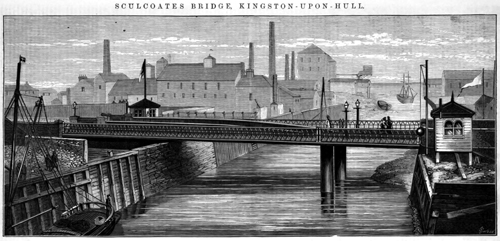Being UK City of Culture in 2017 put Hull firmly back on the map – and drew new attention to its history of seafaring and trading. By Nell Darby.

Located in the East Riding of Yorkshire, the city of Kingston-upon-Hull, to give it its proper name, lies on the River Hull – hence the name. It is not on the coast, but some 25 miles inland from the North Sea; however, it has the air of a seaside city, given that it is located on the Hull where the river meets the Humber estuary. It was founded in the 12th century, when monks at Meaux Abbey, near Beverley, built a quay and port from which they could export the wool the sheep on their estates produced.
In 1293, Edward I bought the port at Hull to use for his military campaigns north of the border. Six years later, he made the area a borough, and named it Kingstown upon Hull, and it grew to become a market town and then a centre for fishing and whaling. Local merchants were able to trade with Scotland and northern Europe, especially Scandinavian countries and the Baltic due to its favourable location.
It exported wool and cloth, and imported wine and wood, with its trading making the town prosperous.
Fishing and shipping
In the 16th century, Meaux Abbey was closed by Henry VIII, and demolished. The stones from the abbey were subsequently used to build defences for Hull. It played a key part in the English Civil War – in the spring of 1642, Charles I was not allowed into Hull, being refused entry through the Beverley Gate by the town’s governor, Sir John Hotham – an act that may have precipitated the war. The people of Hull were supporters of the Roundheads during the Civil War, and found themselves twice besieged by royalists.
After the war, Hull continued to be important because of its proximity to the estuary; in the 1770s, a dock opened, and a decade later, the local shipyard, Blaydes, built HMS Bounty. A famous figure from the town at this time was William Wilberforce, who was the town’s MP from 1780; he would fight to end the slave trade. During this time, Hull was famed for its whaling and fishing; it was England’s biggest whaling port, and local fishermen travelled around the North Sea to catch valuable fish.
In 1845, Earle’s Shipbuilding was founded by brothers William and Charles Earle in Hull. It went on to build ships for the Wilson Line and other firms such as the Hull & Netherlands Steamship Company. Over the next few decades, it built steam yachts and repaired ships; however, it struggled in 1870 when Charles Earle died; this and a labour shortage led to it entering voluntary liquidation in 1900. When Charles Wilson then bought it, the company became part of the Wilson Line (which had been founded by Hull merchant Thomas Wilson in 1840), and it continued to operate until 1932.
20th century and beyond
Hull is notable for having established its own municipal telephone system in 1902, and since then, it has remained unique in the United Kingdom for this separate system; the city doesn’t have the usual red telephone boxes, but cream ones. More information and a chronology of the development of Hull’s telephone system can be found at www.britishtelephones.com/histhull.htm.
In 1927, the University of Hull was founded, as University College Hull, an external college of the University of London. When it opened, the university had just 39 students, and one building, which was on land donated both by the city council and two local men – GF Grant and Thomas Ferens. However, it was only in the 1950s that the university started to rapidly expand, and it received its Royal Charter in September 1954, giving it the power to award degrees itself, rather than as part of the University of London.
Hull saw significant damage during World War 2, due to its strategic location – close to mainland Europe, and on a major estuary – and its port. The Hull Blitz in 1941 was, at the time, not widely reported as taking place in Hull – most reports about it simply said destruction had occurred in a ‘northern coastal town’. Over the course of the war, over 1200 people died in air raids, 3000 were injured, and 95 per cent of the city’s housing was either damaged or destroyed.
Since then, it has seen some decline due to industrial problems, but the new millennium has seen substantial spending to rejuvenate parts of the city. Hull’s Old Town is home to its Museum Quarter, with a veritable wealth of places to visit (see below). There is also the Seven Seas Fish Trail, where visitors can learn about Hull’s fishing heritage by following a route marked by sealife engravings laid into the pavements (for a map of the trail, go to mediafiles.thedms.co.uk/publication/YS-EY/cms/pdf/Hull%20Map.pdf). The City of Culture has increased awareness of what it can offer visitors, and together with new events and festivals such as Hull Noir (www.hullnoir.com) – a crime fiction festival – this city is one to plan a visit to.
